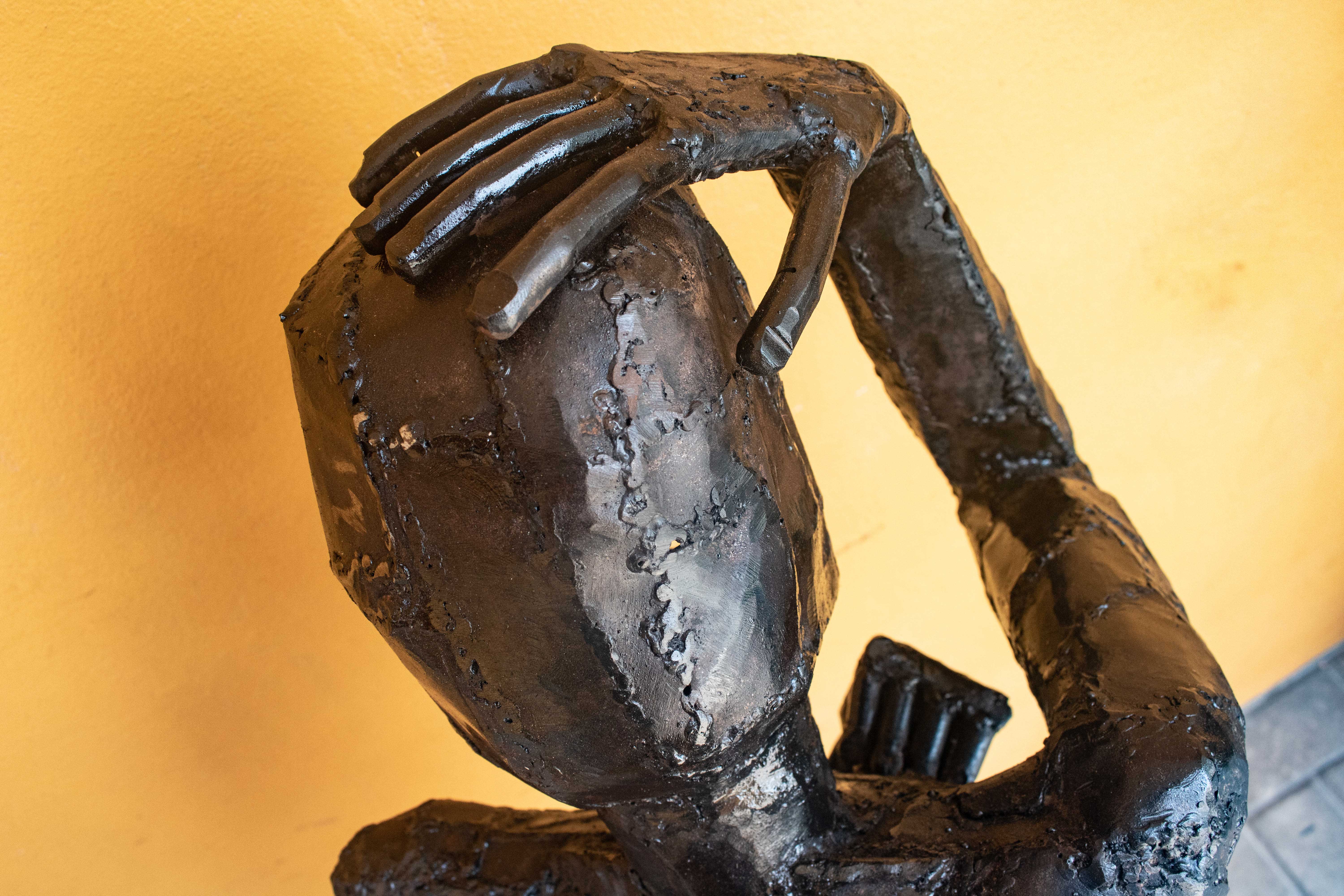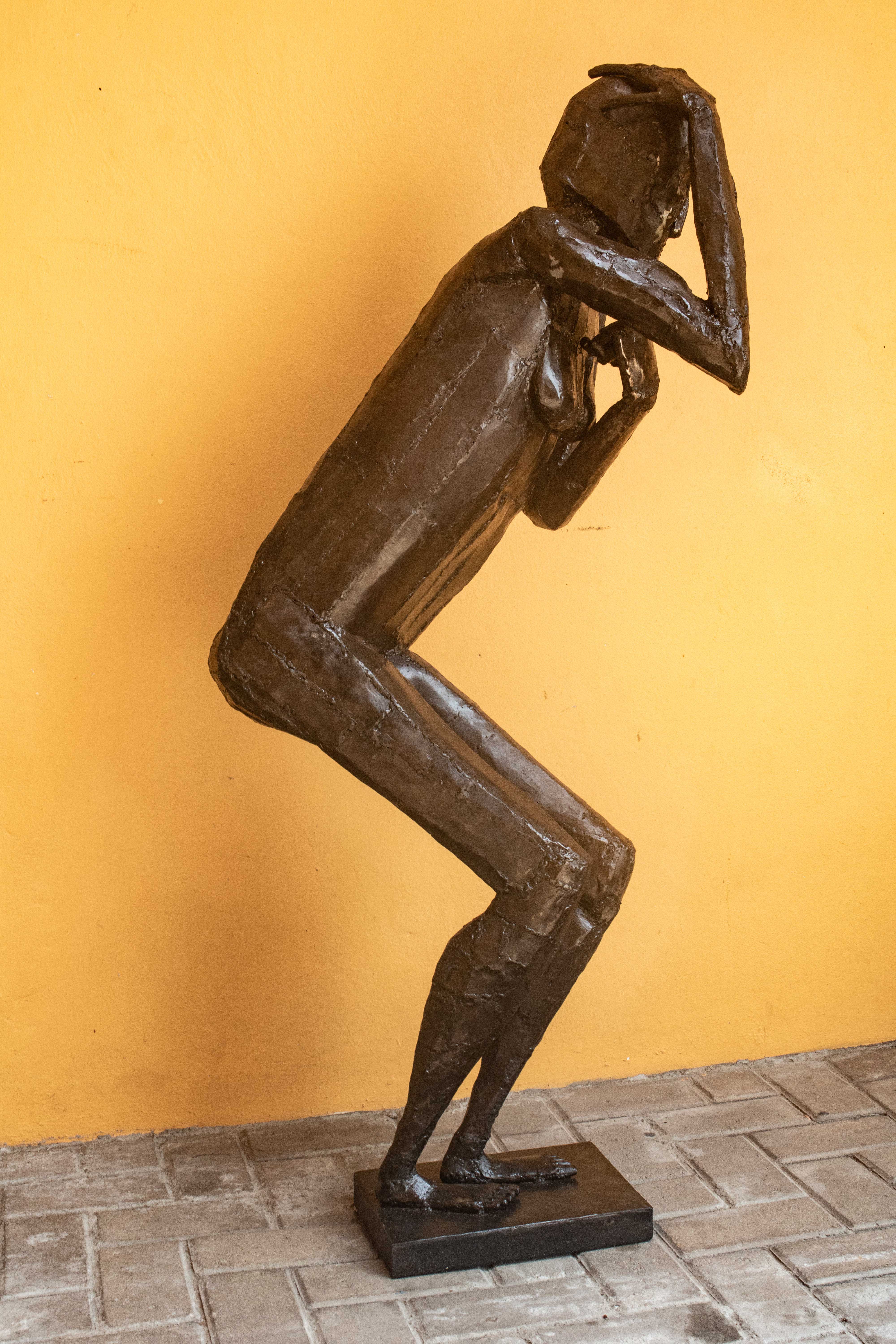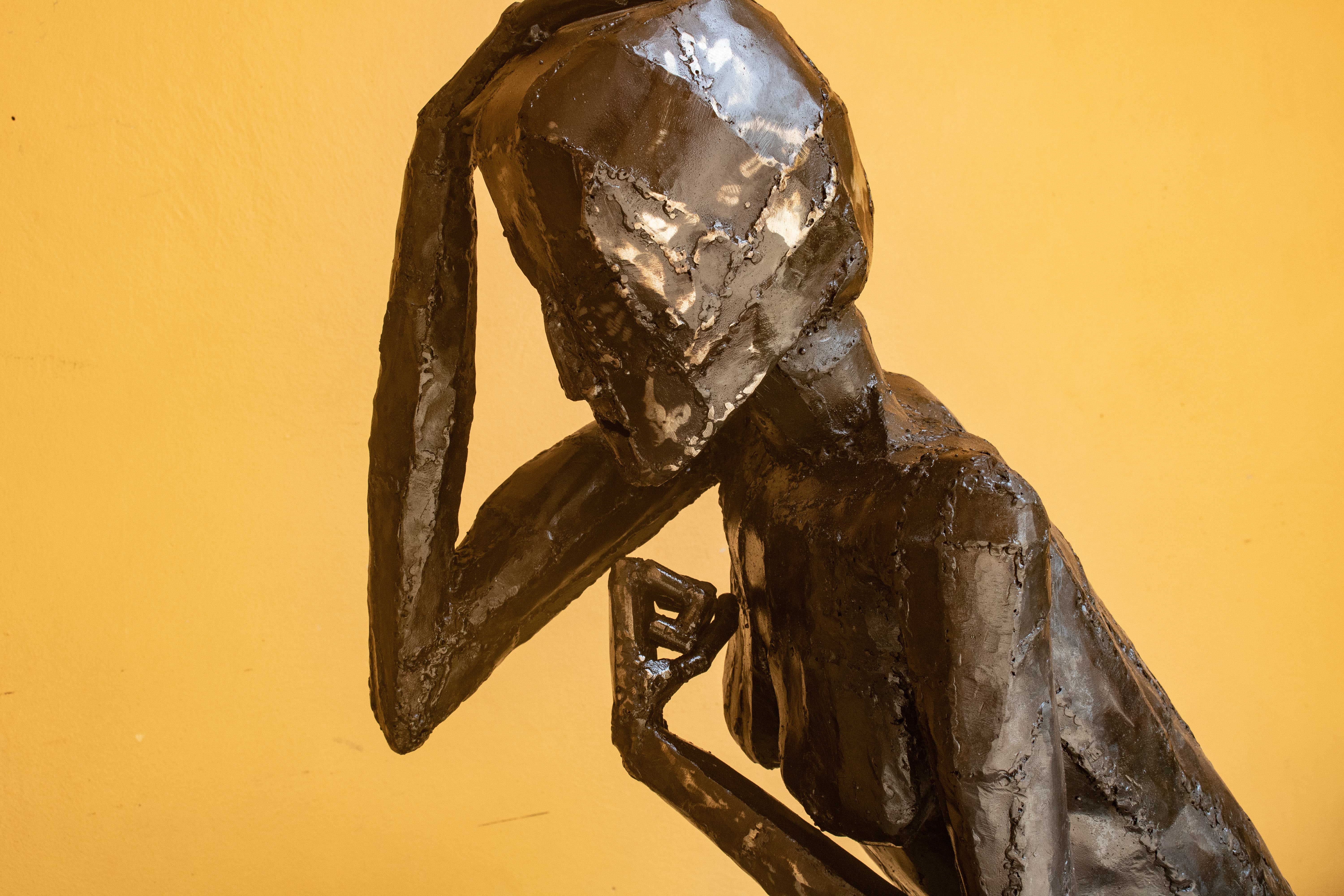“Salima”, Paris, France 2024

In 2022, I travelled around southern Africa to meet local communities affected by climate change. This sculpture is inspired by the testimonies I’ve collected during this artistic research travel (click here to know more).
Salima is the region of Malawi most affected by climate change. I accompanied the NGO Green girls platform, which aims to empower women by making them independent and informing them of their rights. These women look after the crops, harvest the maize and take responsibility for the household and its inhabitants. During my visit, they told me that most of their husbands leave the country to work in the South African mines to earn a bit of money. Flash floods and cyclones ravage the region every year, causing major crop losses, leading to seasonal famine and sometimes death. These climatic events result in huge losses of income for families, who sometimes have to marry off their young daughters against their will in order to have one less mouth to feed. Malnutrition also leads to a range of health problems linked to weakened immune systems.
During droughts or floods, it is customary for communities to plant a seed of maize in the graves. They believe that the dead are closest to the gods and can therefore better negotiate with them to stop the rain/drought.
This sculpture represents a maize plant growing in a grave where the earth has dried out. The faces of the women I photographed are painted on the leaves of the maize plant. The corn plant, made of steel, is oxidised and burnt, giving it an orange and black colour. I should point out that I asked permission from the community and the NGO to create a work representing a custom linked to their beliefs.
1m high, 40cm wide, 60cm long
Clay, plaster, sand, steel











“Charcoal is our only option”, Paris, France 2024

This sculpture was inspired by my itinerant research into African communities affected by climate change (click here to know more).
In the south of Malawi, in the Mulanje mountain range, communities live from agriculture and tea production. Some of the population are very poor and have no land on which to grow crops, so they cut down trees illegally to produce charcoal for resale. To produce this resource, which everyone uses for cooking, they dig a hole in the forest and slowly burn the wood for 24 to 48 hours. This illegal logging has decimated the forests of the mountain range, in addition to causing uncontrolled forest fires. These phenomena cause erosion of the mountains, generating floods that are all the more violent at a time when climate change is amplifying the heavy rains and cyclones in this region.
I wanted to represent these stories of life by means of a cut tree trunk (with the mark of the cut visible). The trunk is hollowed out, in the same way that coal is dug out of the ground. Cracks are visible around the trunk, symbolising erosion. The faces of figures representing the community are carved in white alabaster stone. They are close together, talking and trying to come up with solutions to this problem. The illegal tree-cutters, on the other hand, are sculpted from burnt trunks.
50cm diameter, 50cm high
Alder wood, alabaster bench





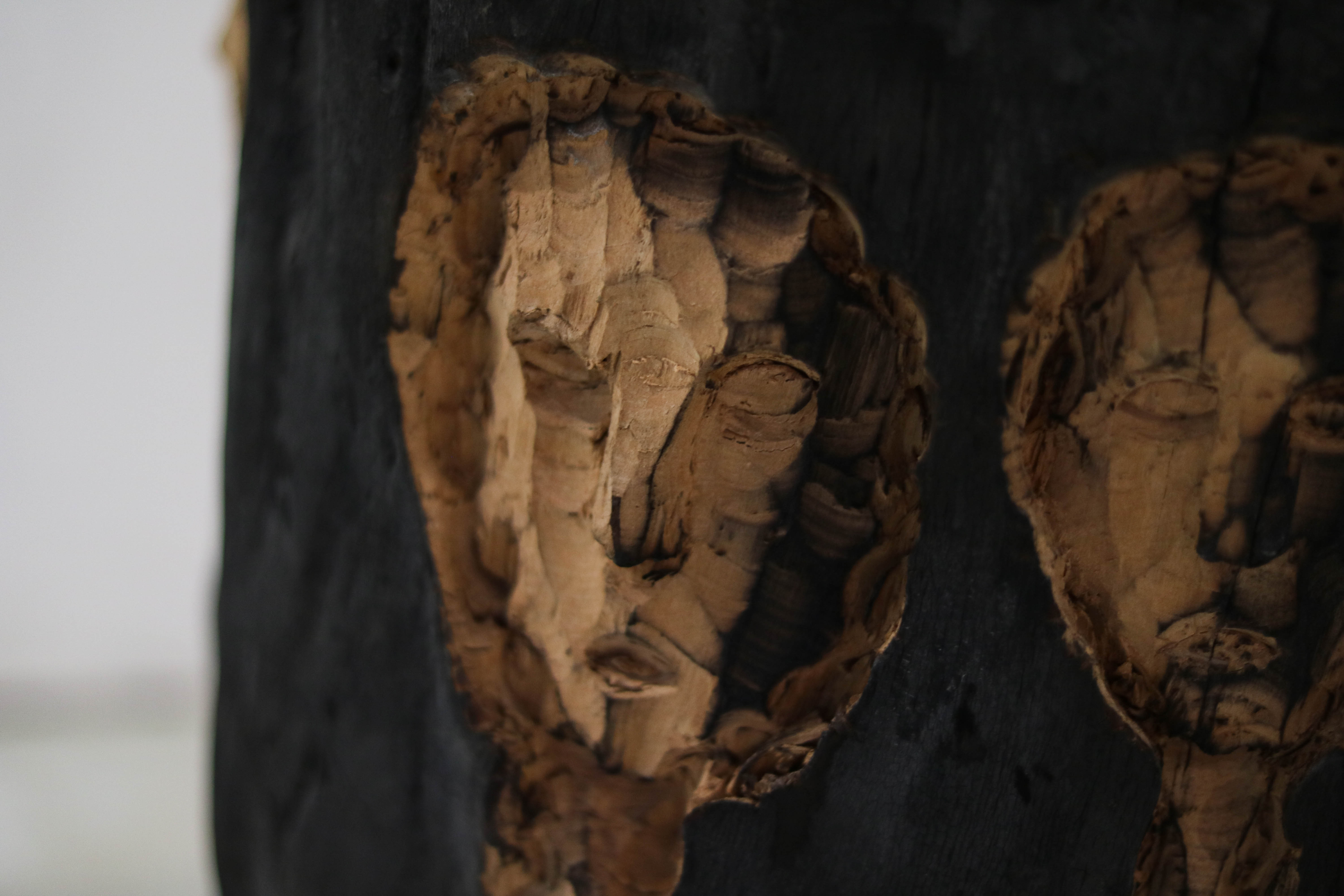



“Macutí”, Paris, France 2024

Mozambique Island is a small island off the coast in the north of the country. It was here that the first Portuguese settlers landed when the territory was occupied by Sultan Mussa Mbiki. Today, this 1km² territory is inhabited by 16,000 people, most of them crammed into makeshift dwellings in the southern area known as Macuti. In the northern part, there are vestiges of the colonial era, such as the fortress, the church, the hospital and other buildings, some of which have been converted into hotels, restaurants and boutique workshops. The contrast between these two worlds is striking, especially as the stones used to build the Portuguese fortress were extracted from the area where Macuti is now located, making it an area below sea level and therefore easily flooded. Two months before my visit, the intense tropical cyclone Gombe flooded Macuti.
A large steel bridge links the mainland to the island. The first thing I saw when I arrived was a huge banyan tree with a trunk about 3m in diameter strewn across the ground, blown over by Gombe's gusts. A dozen children were having fun climbing it, and I found the image very powerful. I've seen other trees on the island uprooted like this one. The population of this island, like that of Mozambique and Africa, is very young. I saw lots of groups of children, their clothes torn, hungry and injured, playing in the street in the evening.
The sculpture I made shows a child balancing on a still life. The position of the feet on the branches is reminiscent of stilts and play. The body is distorted and disturbing, the fist clenched in anger. There are holes in the steel trousers at the knee, and the body is covered with mouths, noses and eyes that represent the victims of Cyclone Gombe on the island of Mozambique. In this sculpture, we can see an inner child; yours, mine, theirs, facing the test of contemporary crises.
1m60 high, 50cm wide, 50cm deep
Steel, plaster, acrylic, charcoal









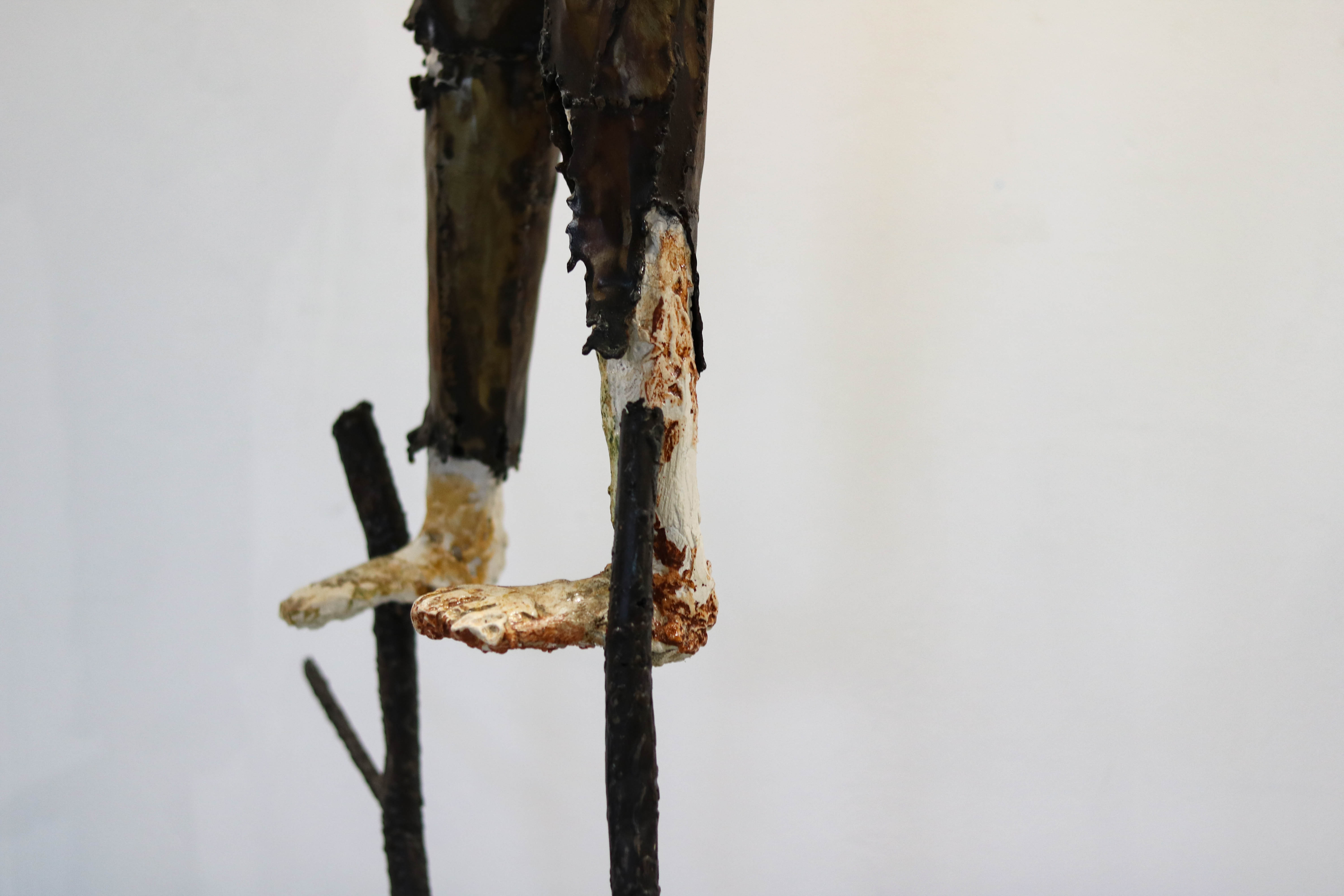
“Kambi Ndembo”, Paris, France 2024
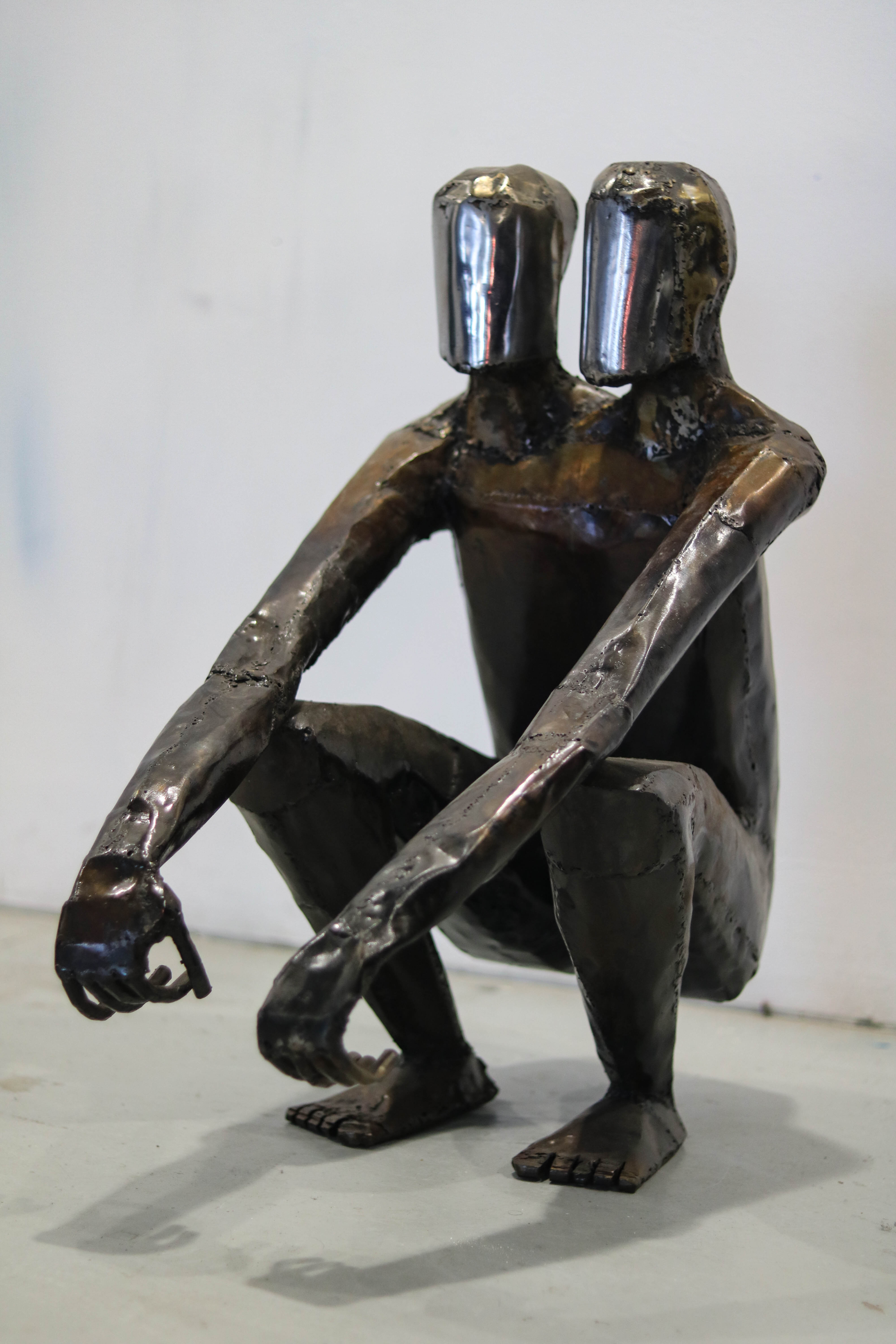
In 2023, I spent 5 months in the Niassa Special Reserve in northern Mozambique. With a surface area the size of Switzerland, this natural area is shared by the Yao community and a magnificent flora and fauna. I lived alongside Norte, Matola, Cecilia, Roque, Josina, Agostinho and Raimondo. We set up camp (‘Kambi Ndembo’: elephant camp in XiYao) in the middle of the bush. We lived to the rhythm of the sun and moon, using the river water to wash and cook. At night we were sometimes visited by lions, elephants and buffalo, and during the day we had to be on our guard. As someone who was born into western comfort, this experience gave me an insight into another facet of the world with its own codes. We spent nights discussing our respective lives by the light of the fire. Sharing with others helps you to develop your thinking and to learn more about yourself, others and your environment. Living this part of my life has forced me to live in a firmly rooted reality, in the moment and the concrete. This sculpture represents that feeling and the inner dialogue it gave rise to as I sat around the fire talking to them. It's a position I had in reserve, with both feet firmly planted in the ground and close to the earth. The two heads in the shape of futuristic helmets, smoothed out, represent this dialogue and the disconnection in our relationship with the living, with the moment.
recycled steel, oxidised and burnt over a wood fire
60cm high, 60cm deep, 40cm wide





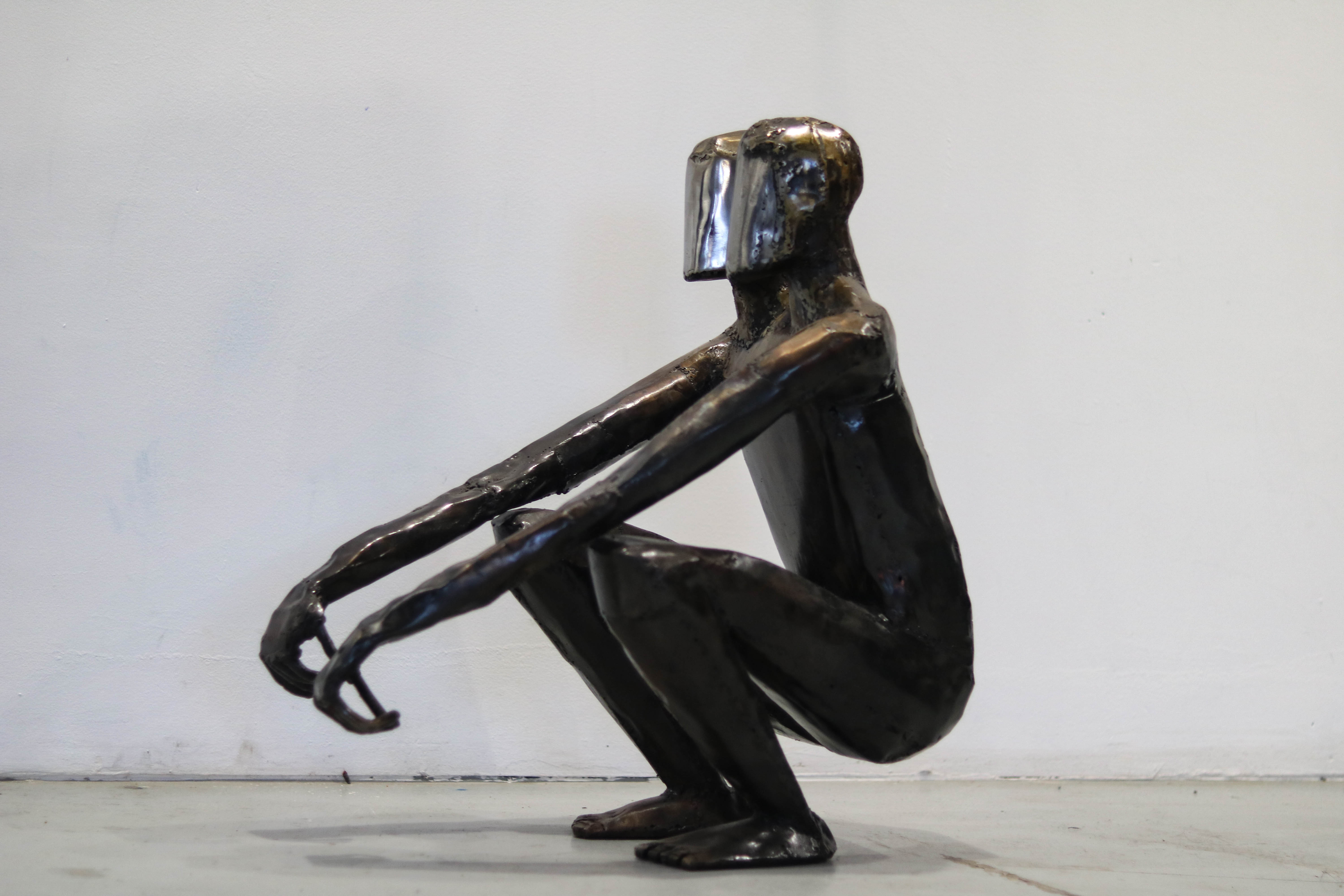
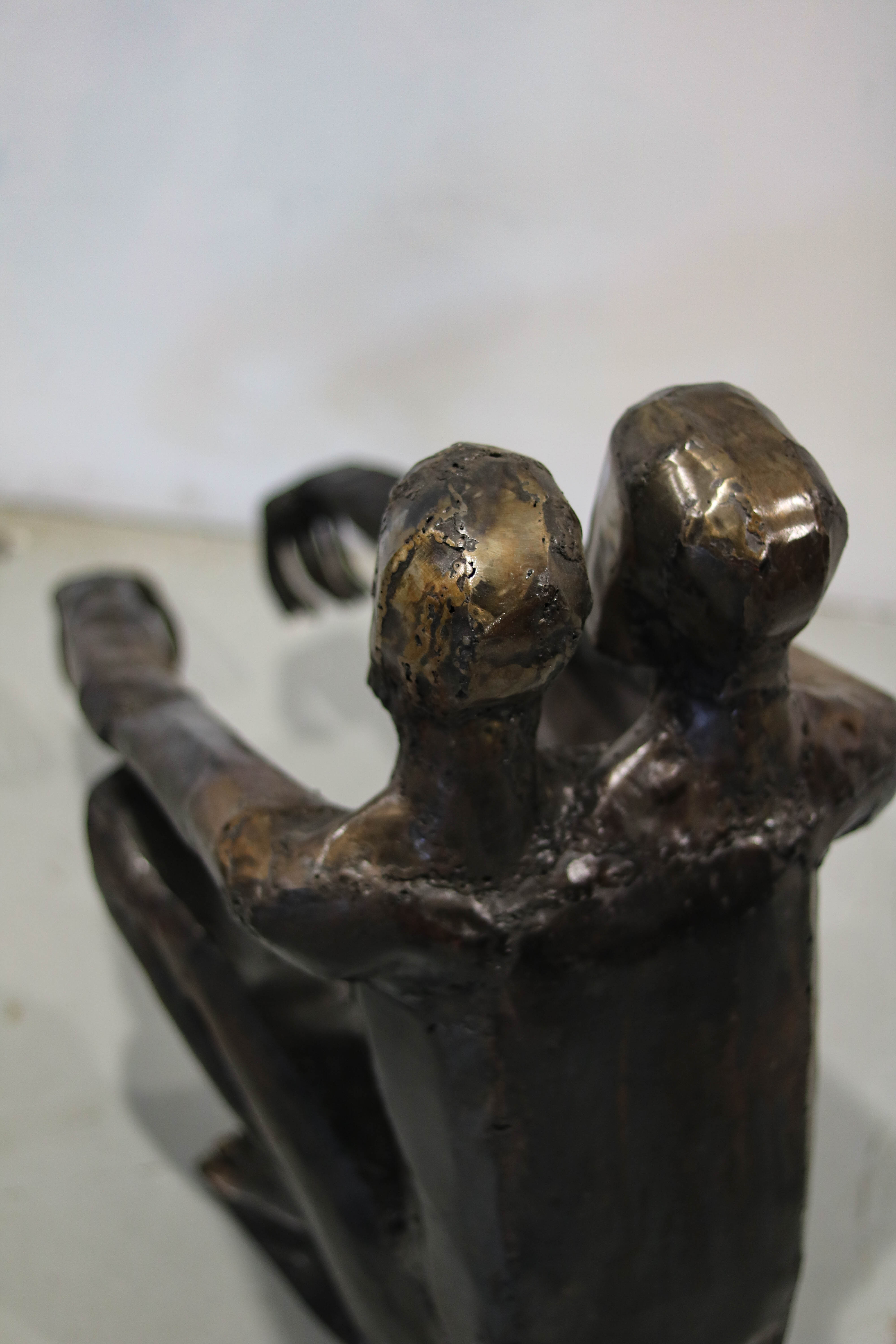


“Pain”, serie of 3 sculptures that shows climate change impacts on health
Mafalala Museum, Mozambique
I traveled roughly 8000 from Kenya to South Africa through Tanzania, Malawi and especially Mozambique where I stayed for two months. This three-month trip was carried out in collaboration with local stakeholders and 5 NGOs. I interviewed around 300 people in more than 15 communities stricken regularly by the effects of climate disruption which happen to compound already existing crises.
In Mozambique I accompanied Pain Without Borders, a French international solidarity NGO working in health and striving to bettering pain management, end-of-life symptoms and local suffering.
Aiming at showing the feelings of the stricken communities in the most accurate way possible, I accompanied the NGO in the Sofala and Gaza provinces to carry out interviews with the local people. Four sculptures were born from these testimonies. Sculpted with recovered steel and covered in calamine which gives them their black shade. I created a contrast with rust to emphasize the body parts where patients feel pain.
In 2019, cyclone Idai devastated the Mozambican town of Beira, Sofala province, where I happened to stay for 6 days. The outcome : 1000 dead, 600 000 affected, thousands deported and 90% of the town destroyed.
“Lorenzo”
Lorenzo is one of the patients I met with the NGO and meeting him particularly struck me.
35-year-old Lorenzo suffers from bone tuberculosis which paralyzed both his legs. He is physically frail and also had a stroke which rendered him psychologically unstable. He is entirely dependent on his wife and daughters who tend to him while attempting to find income to provide for this family of four. He used to be a fisherman.
The interview had just started and as I was asking him about the impact of Idai on his family, he immediately had a strong reaction and screamed the name of the cyclone, shaking and crying. The interview was immediately cut short and we left the premises. Lorenzo is traumatized by Idai’s rampage.
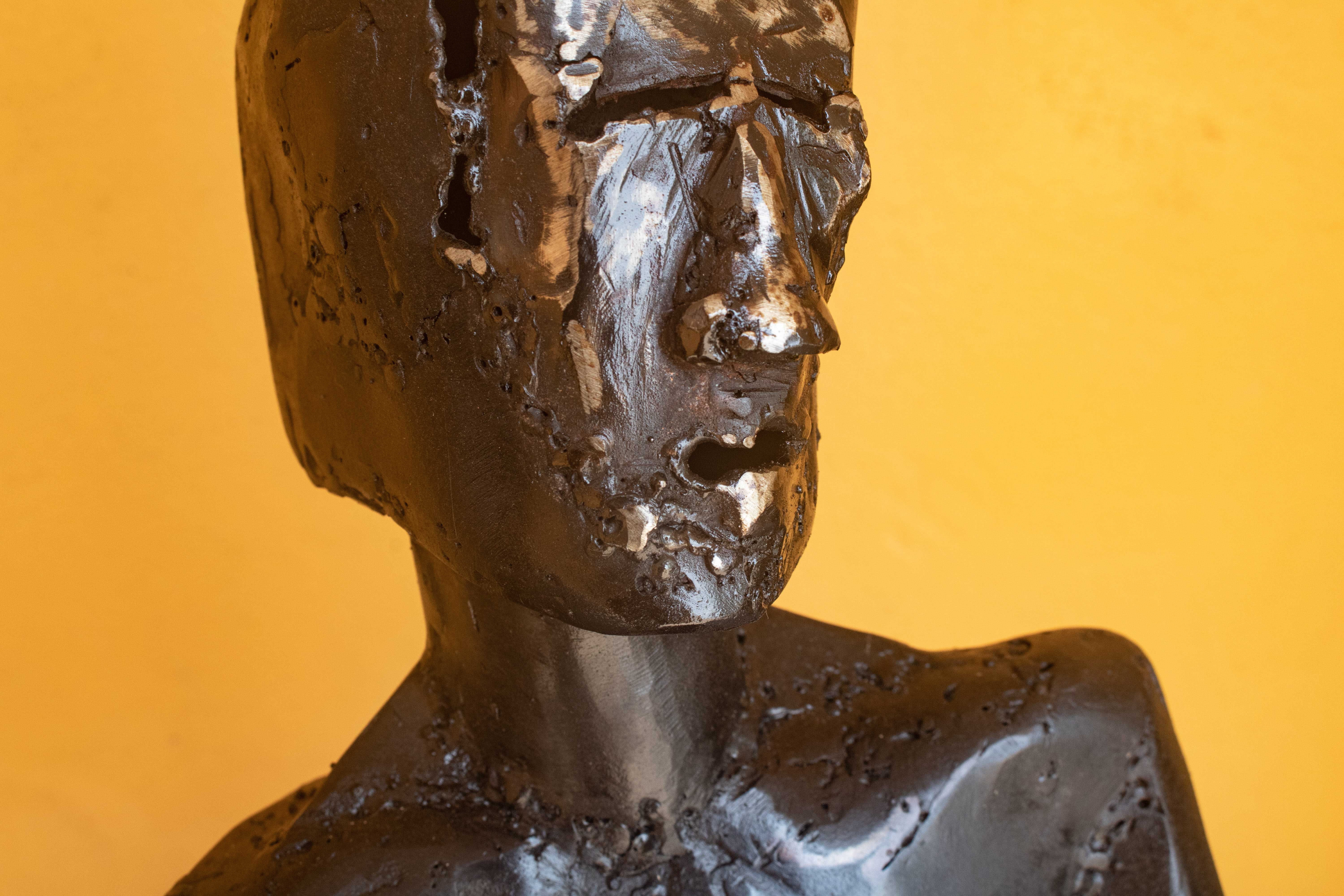
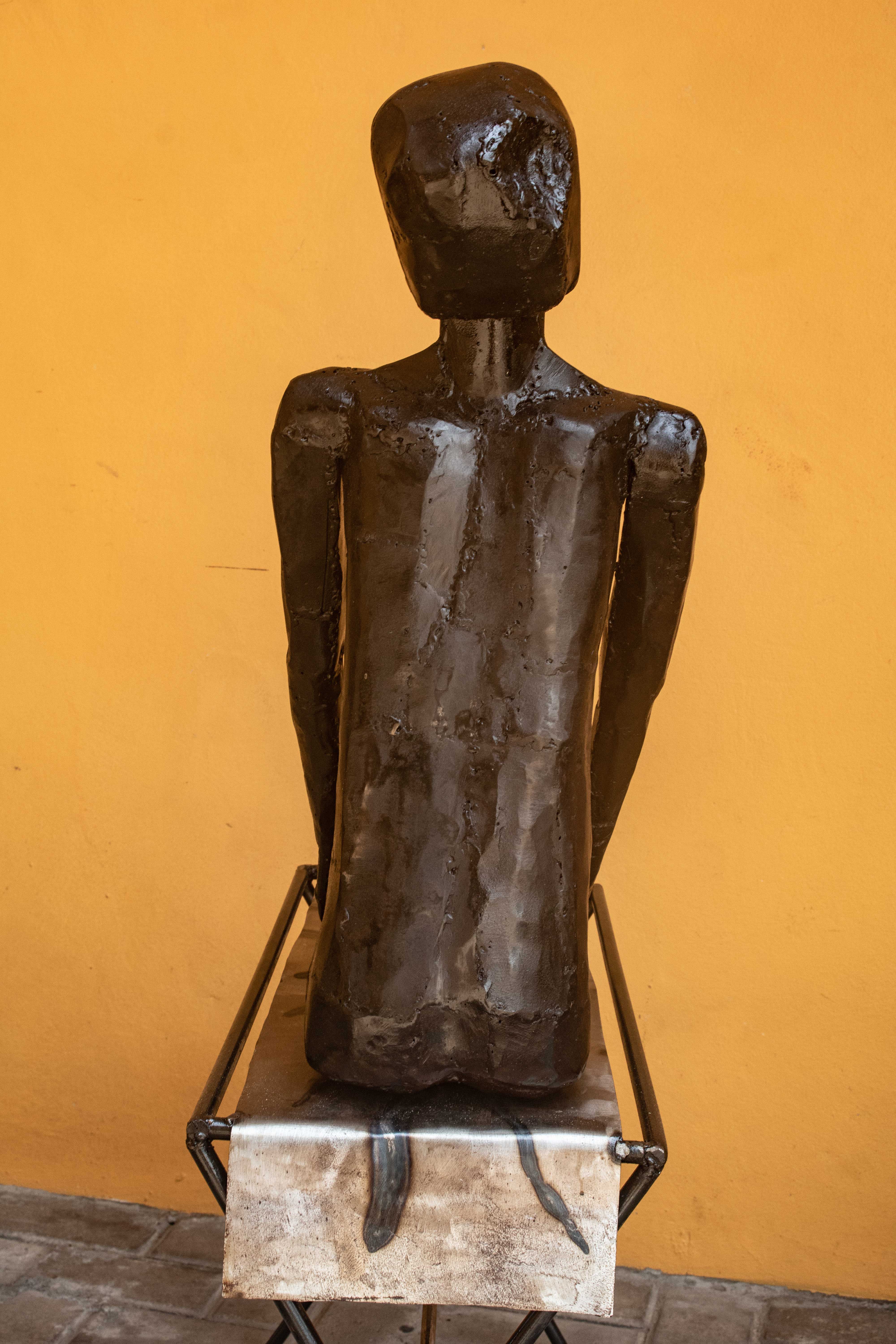



Felipe
A 15-year-old teen, Felipe has both mental and physical deficiencies. He is epileptic, malnourished and looks like a 10-year-old child.
His mother Melita is 45 years old and a mother of 3. She has been HIV-positive since 2023, like 25% of the Gaza population. Her family lives in extreme poverty.



Paulinha
Paulinha had a stroke several days after Idai. She is psychologically unstable. When I visited she was sat in a big chair, jaw clenched and fingers intertwined. She recounts the noise, the screams, the screeching sound, the roof blown off, the death of the coop and her fleeing to her neighbor’s. She stands up and opens a neatly organized file. She draws a pile of documents from the file : 23 attestations of civic work participation such as women and men equality awareness, HIV, climate disruption, forest preservation, and so on. Commitment to causes helps her sleep better.
